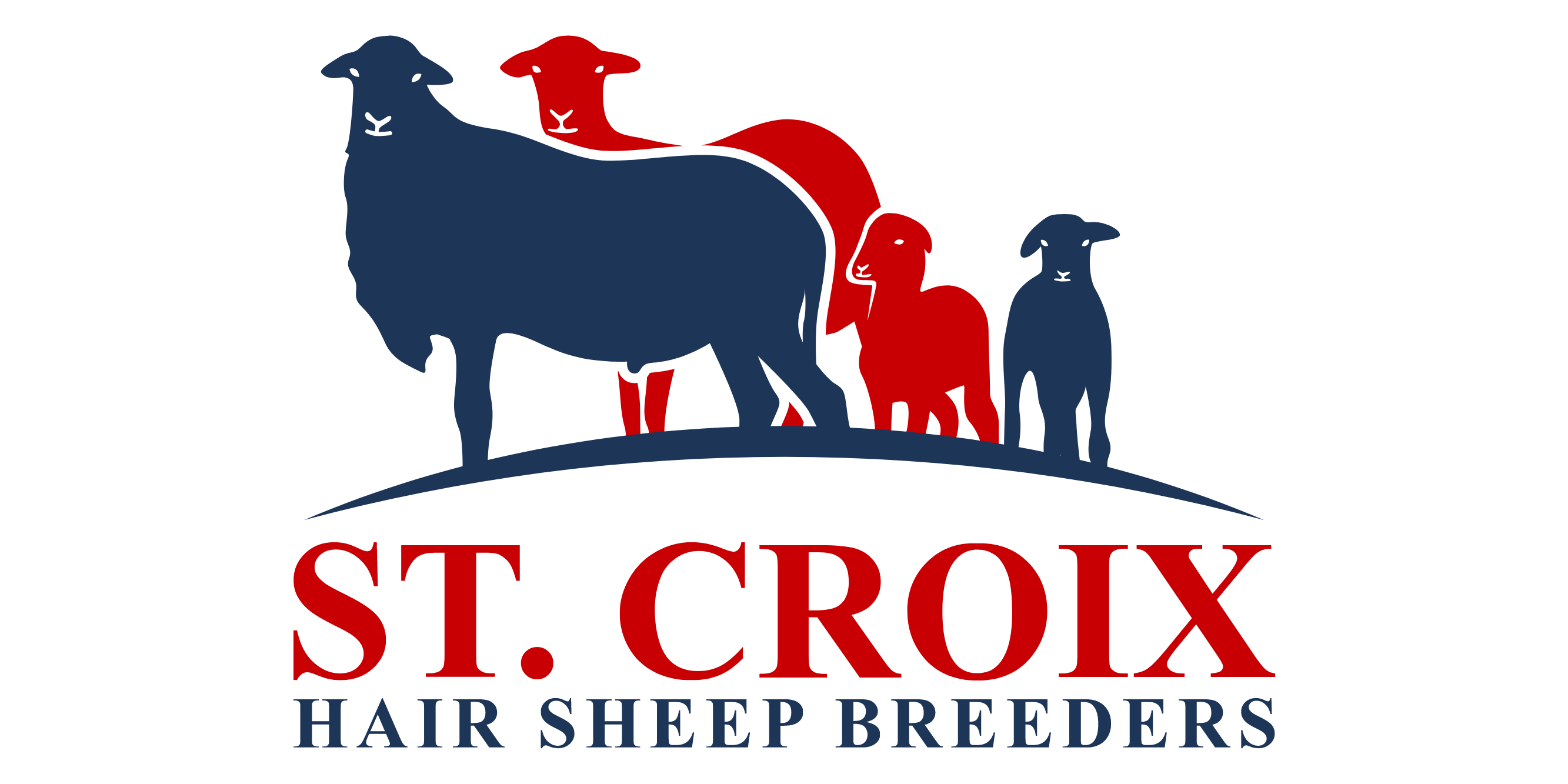
Hair sheep probably came to the Caribbean on slave ships from West Africa in the 1500s, as a food source. They may also be a cross between the Wiltshire Horn and the native Criollo. While their origin remains unclear, less than 2 million hair sheep of various types or breeds are found throughout the Caribbean region today.
Michael Piel of Maine first brought one ram and two ewe “Virgin Island White” sheep into the U.S. in the 1960s, for use in the formation of the Katahdin breed. A second importation from the Island of St. Croix (US Virgin Islands) of 22 bred ewes and 3 rams was initiated by Dr. Warren Foote of Utah State University (USU), Logan UT in 1975. This second group of sheep provided the foundation animals for the modern St Croix breed. Selection criteria for these foundation animals included: white coats, average to above-average conformation, average to above-average body size, and lack of horns in both sexes. Small experimental flocks derived from the USU population were established at Florida State University, Clemson University in South Carolina, Cal Poly in Pomona, CA, and several USDA field stations. USU personnel realized the sheep had useful characteristics, and Dr. Foote founded a breed registry in the 1980s.
Prior to 1983, the breeding at USU was managed as “pasture breeding”, with multiple sires breeding ewes in the flock. Thus, the sire is marked as unknown, or is left blank, on early pedigrees. Sheep identified on early pedigrees as “yellow” and with registration numbers lower than 100 are original imports from St Croix (including lambs born to ewes that were imported pregnant). Five digit numbers (10001, 10008, etc) are either original imports, or offspring of those imports born at Florida State and returned to USU in 1982-83.